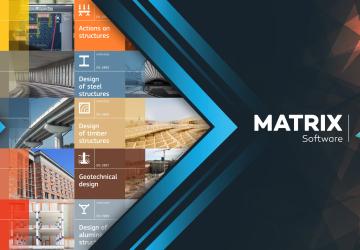Efficient CLT Design with FEM-Design: Easy, Powerful, and Visual
Cross-laminated timber (CLT) has emerged as a great product in modern construction. This engineered wood product offers a sustainable alternative to traditional materials and provides structural flexibility and strength. With an increasing focus on sustainability, CLT is becoming popular among structural engineers who create residential and commercial structures. FEM-Design simplifies the design and analysis process of CLT structures, offering powerful tools that are easy to use and understand while providing efficient structural solutions.
One of FEM-Design's standout features is its fire design capability for CLT structures. The software can calculate the charring of the cross-section, allowing you to evaluate the reduced structural performance under fire exposure. Our fire design tools also consider protective layers, such as gypsum or other insulation materials, and account for the 'flash fire' effect, where rapid exposure to fire causes accelerated charring. By factoring in these variables, engineers can ensure that CLT panels maintain their structural integrity even in fire conditions, enhancing both safety and performance.
In timber structures, serviceability considerations such as deflections are critical. FEM-Design allows you to set different deflection criteria depending on the loading scenario. You can define quasi-permanent, characteristic, and frequent serviceability limit state (SLS) conditions, each with its corresponding creep factor. This, together with the other features of FEM-Design such as non-linear calculations, different stiffness definitions in connections depending on load scenario and a full dynamic analysis package, will ensure accurate SLS behaviour and performance throughout the building's lifecycle (LC).
FEM-Design covers a comprehensive range of ultimate limit state (ULS) checks for CLT structures following Eurocode, with additional checks based on the upcoming GEN 2 of Eurocode. These include tension and bending checks (EC5 6.2.3), compression and bending (EC5 6.1.4 and 6.2.4), shear checks (EC5 6.1.7), and shear interaction (tension and shear, compression and shear). One of the unique features of our software is the ability to check for buckling of CLT panels in any arbitrary direction. This flexibility is particularly important for shear walls, where buckling may occur at a slanted angle. FEM-Design automatically calculates the structural properties for the buckling in the defined direction, making it a powerful tool for advanced CLT analysis.
FEM-Design makes the start-up process for CLT design as seamless as possible. The software includes a library of CLT materials, enabling users to select the appropriate panels for their projects quickly. However, flexibility is key - engineers can easily create custom panels to meet specific design needs. Our transparent analysis results allow you to see the forces between each layer of the CLT panels, providing detailed insights into the structural behaviour of your design. This visual and user-friendly interface is one of the main strengths of FEM-Design, making it easy to implement design changes by utilising common CAD-like tools for a smooth workflow.
FEM-Design offers a powerful, easy-to-use solution for CLT design. Its intuitive interface and visual input tools make it simple to get started, while its extensive range of features, such as SLS and ULS checks and fire design, provide everything an engineer needs for comprehensive CLT analysis. Priced competitively and packed together with MatrixFrame / MatrixTools, it is the ideal choice for efficient and flexible CLT projects.
To try it yourself, simply apply for a free trial using this link: https://strusoft.com/#trial-license.




